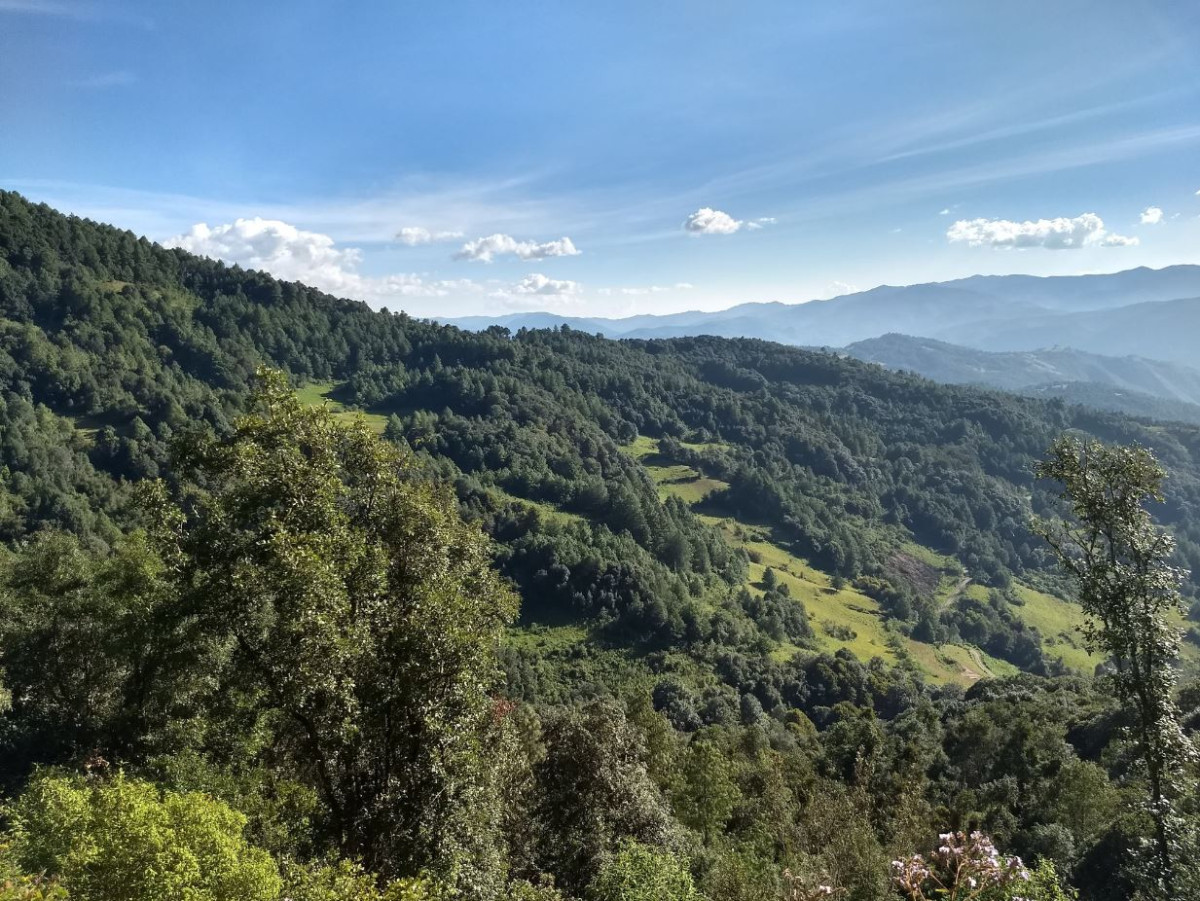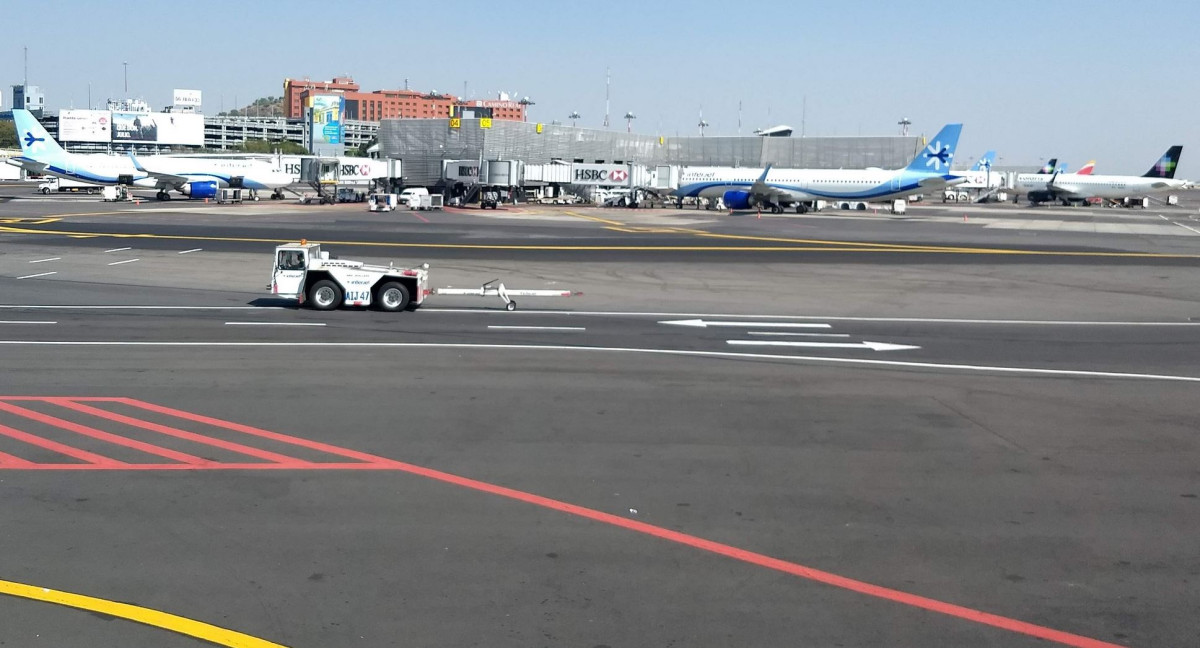Corporate run on carbon credits triggers offset gold rush in Mexico's forests
*** Please note: This article is part of the CLEW focus on company climate claims.
This dossier lists our existing publications and future content plans, and our upcoming events are here.
This blog explains why we decided to launch the project.***
The rapidly growing crowd of companies with climate targets has turned Mexico into a hotbed of carbon offsetting projects. The country boasts extensive forests, and many local communities are keen to capitalise on this gold rush, which is fanned not only by multinational firms wanting to compensate for continuing emissions, but also by project developers, governmental agencies, and financial institutions.
“Many businesses want to reduce their climate impact, and the acquisition of carbon credits is fashionable because it allows them to boast that they are reducing emissions,” explains policy analyst Lilian Sánchez from NGO Mexico Climate Initiative. “The logic is to only compensate for emissions that are difficult to reduce. But many companies go the easy way and, instead of reducing emissions, use carbon offsets. That explains the growth of the voluntary carbon market,” where companies can buy credits, Sánchez told Clean Energy Wire.
Rosendo Perez, the international coordinator of ICICO, a nonprofit with several long-running offset projects operating in the southern Mexican state of Oaxaca, points to business interests and a lack of public policy to explain the boom. “There are many stakeholders involved, national and international bodies, firms, financers. The lack of access to financing often leads communities to accept these projects.”
Offsetting troubles
Carbon offsets allow companies to pay for the protection of trees, for example, and then claim that the CO2 they absorb compensates continued emissions, reducing their climate impact. Carbon offsetting projects issue certificates, each representing the removal of one metric tonne of carbon dioxide from the atmosphere. These can be bought on what is known as the voluntary carbon market.
There are a number of standards meant to guarantee that this trade effectively benefits the climate by ensuring that the storage of CO2 is genuinely additional – meaning it would not have happened without the project – and permanent.
But forest offsetting schemes have come under increasing fire for being unreliable, leading critics to argue that they amount to nothing more than selling hot air. For example, an analysis of satellite data has recently revealed that ten years of forest carbon offsets in California have not really benefited the climate.
An investigation by British newspaper The Guardian and German magazine Die Zeit also concluded that rainforest carbon offsets provided by market leader Verra are largely worthless because they do not represent genuine carbon reductions, and could even entail human rights violations. Last year, a Bloomberg investigation revealed that an offsetting scheme in Mexico used by oil major BP underpaid local communities.
Despite these growing concerns, carbon offsetting is thriving in Mexico. The country has more than 32 million hectares of forest, which cover around a sixth of the national territory.
“We see growth in the market. It’s pushed by the rising prices in the voluntary market,” said Fernando Hierro, the commercial manager of carbon offsetting company Toroto, who suggested that forested areas could still increase substantially “Many project developers look at Mexico for its potential of 50 million hectares. The market is interested in high-quality offsets and social, environmental and economic benefits.”
The Voluntary Registry Offsets Database, which covers four types of standards and was developed by the Berkeley Carbon Trading Project and thinktank Carbon Direct, enlists a total of 206 CO2 ventures in Mexico that have issued a combined 4 million credits. From that total, 94 forest schemes have already sold 2.5 million credits. But many more are in preparatory stages: There are already 186 forest initiatives involved in offsetting. Of these, 172 fall under the Climate Action Reserve’s (CAR) forest protocol, a California-based standard designer. A source from the forest sector, who requested anonymity, told Clean Energy Wire that the government simply allowed CAR to take the lead and push it as the de facto forest protocol, without much oversight.
The income communities can generate with offsetting projects often remains far below expectations because they only receive comparatively low payments, and the offsetting process is expensive and takes time.
Nonetheless, ICICO coordinator Perez insists that the projects bring benefits. “The income goes directly to the communities. And they use it for conservation purposes. There are more conservation areas, pruning, soil conservation, forest fire prevention,” he said, adding that the projects increase the value of ecosystems, for example by influencing the forests’ capacity to store water, sustain more biodiversity, thus improving communities’ livelihoods, and preserving the beauty of the landscape.
The non-governmental Mexican Civil Council for Sustainable Forestry lists 4,886 communities that own forests, of which some 2,100 commercially exploit them. But only seven million hectares, in the hands of some 600 communities, operate with a management and conservation plan, a requirement for obtaining approval for the harvesting programmes promoted by the state-run National Forestry Commission (Conafor).
Case studies: Mexican carbon offset players
ICICO
ICICO is one of many offsetting initiatives in Mexico. It issued the first CO2 offsets in 2008. It has 12 associated communities and three more in the pipeline, with a total forest area of 80,000 hectares, of which 45,000 are under forest management. ICICO’s carbon offsetting projects cover 11 communities with a territory of 23,000 hectares. Since its inception, it has sold 275,000 offsets to companies such as a Mexican pharmaceutical firm and a foundation linked to a TV emporium for a total of US$3.5 million. In 2022, ICICO received US$14 for every tonne of CO2, a rate above the global average.
CO2munitario
The initiative “CO2munitario” is financed by BP and the US Agency for International Development, and developed by the non-governmental World Resources Institute and Mexican Pronatura. A Bloomberg investigation revealed that communities are not being adequately paid for their work on a CO2munitario offsetting project, which spans 59 communities in more than six states, aims to cover 204,000 hectares of land, and plans to issue 941,000 credits by 2024. To offset some of its ongoing CO2 emissions, BP pays between four and ten dollars a bond.
Toroto
Carbon offsetting company Toroto’s portfolio includes 50 forest initiatives over some 50,000 hectares under the protocol of standard setter Climate Action Reserve (CAR). One of their projects issued 37,080 credits last October.
Mestizo Carbon CO2
Another initiative involves the Maryland-based Wildlife Habitat Council (WHC), which signed an agreement in 2021 with the Mexican private firm The Earth Lab for developing projects and the issuing of offsets. The WHC has 79 members, among them prominent companies such as Aramco Americas, BASF, BP, Cemex, Chemours, Chevron, DuPont, Energy Transfer, Exxon, Freeport McMoRan, Kinder Morgan, Occidental Petroleum, Shell and Vulcan Materials. In Mexico, the council has developed 29 projects, where TEL will develop forest schemes and WHC members will buy the offsets. TEL also takes part in the Mestizo Carbon Ban.CO2, a compensation platform that operates 10 projects.
Government and governance bodies step in
Following the huge growth of Mexican carbon credits, the scandal over BP offsets, as well as complaints by local communities of excessive issuing costs and other problems, the government woke up to the growing market inconsistencies and intervened. The environment ministry (Semarnat) had meetings with Verra, which administers the Verified Carbon Standard, standard setter CAR, and representatives from the foundation Plan Vivo, which runs offsetting projects, to agree on a memorandum of understanding and on a roundtable to address the shortcomings of existing projects, a forest sector insider told Clean Energy Wire. But the memorandum isn’t yet in force. Neither CAR nor Verra responded to a request for comment.
Mexico was planning to open its Trade Emissions System (SCE) in January, which will cover energy and industrial companies that emit at least 25,000 tonnes of CO2. Created by the Climate Change General Law and following a 2.5-year pilot programme, the SCE is set to establish a total cap on CO2 emissions from fossil fuel consumption and industrial processes, as well as a free allowance mechanism. But the environmental ministry hasn’t analysed the pilot results, nor established the operation rules for the market, according to people involved in setting up the scheme. The environmental ministry didn’t answer a request for comment.
The national market will involve 282 players, with a total of 227.75 million credits, according to a public information request. Stakeholders lament that the SCE includes a ten percent offset cap – they argue this will move the credits to the international voluntary market.
The Climate Change and Sustainability Commission in the lower house of Mexico’s parliament will closely monitor the operation of the market, said Edna Díaz, the commission’s president. “We are concerned about transparency,” she told Clean Energy Wire.
International organisations are also stepping in to improve the credibility and effectiveness of carbon offsets. In July, the London-based non-profit Integrity Council for the Voluntary Carbon Market, one of the leading organisations governing the CO2 markets, published the draft of its Core Carbon Principles for consultation, which include criteria such as additionality, mitigation activity information, prevention of double counting, permanence, robust independent 3rd party validation, verification, quantification of emissions reductions and removals, and sustainable development impact and safeguards.
Offsetting company Toroto’s Hierro praised the efforts to increase transparency: “It’s a new market, and therefore offers many opportunities for improvement. There should be continuous efforts that involve many stakeholders,” he said. “We must focus on improving the integrity of the projects so that Mexico can become an international role model and attract businesses that look for high-quality credits.”
Sanchez, from NGO Mexico Climate Initiative, also said increasing transparency was a central task to lend offsetting more credibility. “There should be more transparency to know how many tonnes are traded, at what price, and who sells. Additionality needs transparency, to avoid double counting of emissions. Otherwise, we can’t know if reductions are effective. Requirements should be robust,” she said.



